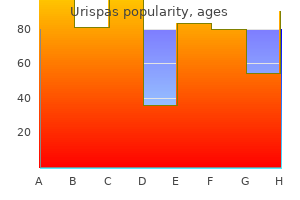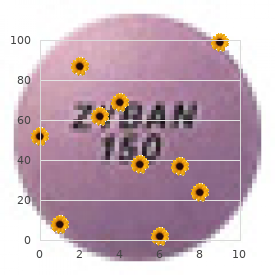Urispas
"Purchase genuine urispas line, muscle relaxant methocarbamol addiction".
By: D. Harek, M.A., M.D., M.P.H.
Clinical Director, University of Alabama School of Medicine
Maintenance Continued dedication to sustaining new behaviour muscle relaxant natural buy urispas in united states online, and integrating this behaviour into every day routine spasms 1983 dvd order urispas 200mg overnight delivery. Relapse To help client recognize that each attempt provides new alternatives to study new skills and techniques to help them achieve success in their next attempt kidney spasms no pain discount 200 mg urispas with amex. Guide your sufferers to a smoke-free future: A program of the Canadian Council on Smoking and Health spasms hands and feet order urispas 200mg free shipping. Motivational interviewing is facilitative rather than coercive and tentatively difficult rather than immediately confrontational. The strategies help the client via the change process by fostering self-reflection rather than arguments between practitioner and client (Botelho & Skinner, 1995). Searching for a way to facilitate behaviour change in clients with substance abuse, psychologists William Miller and Stephen Rollnick developed motivational interviewing. By assessing the degree of readiness, nurses can choose specific communication skills and appropriate strategies to facilitate change. This will create a beneficial and supportive climate for change � problems are attacked, not individuals. Motivational interviewing, designed to take 3-5 minutes per session, is a psychosocial or socio-behavioural approach to client care that contrasts with the standard biomedical approach. Asking if there are questions or concerns the client could have about the illness or therapies is a constructive means of assessing this chance. The psychosocial model also views the encounter between client and healthcare supplier as a meeting of specialists. The nurse or different healthcare suppliers could also be an professional on disease management, however clients are specialists on themselves and how they will be affected by the proposed changes in their lives. However, nurses can create an surroundings via caring, adequate information, and understanding to improve the possibility that the client will handle their illness effectively (Berger, 2004a,b). Resistance is information and provides perception into what the particular person is pondering and 100 Nursing Best Practice Guideline feeling: "I have to discover this and see if it works for me. Dissonance is uncomfortable and the particular person could also be motivated to discover ways to reduce this uncomfortable feeling. One must consider that the client has understood the information, knows tips on how to use it, and has a feeling of self-efficacy or confidence in their capacity to do what is needed. Then, nurses elicit information once more to check for concerns or questions resulting from the new information. Motivational interviewing uses five ideas or counseling techniques to assess and create motivation throughout the client (Berger, 2004a,b; Miller & Rollnick, 1991; Smith, Heckemeyer, Kraft & Mason, 1997). Express empathy � Empathy is defined as the "capacity of the supplier to precisely replicate what the client is saying" (Moyers, 2000; p. Empathetic responding, via energetic listening, helps determine and understand resistance and reasons for unhealthy behaviours (or non-adherence). Avoid arguments � By avoiding arguments, the client is extra prone to see the healthcare supplier as being on his/her facet. Develop discrepancy (dissonance) � Creating dissonance may be achieved in two major ways. The objective is to elicit from the client those aspects of his or her life that are essential however could also be compromised because of the behaviour. In the following sentence, she or he could add that since she or he was diagnosed as having high blood pressure, she or he may be very worried about having a stroke. Ask the client about the pros and cons of the changes that are needed after which listen rigorously for discrepancies that permit for the creation of dissonance. We develop discrepancies by repeating back the professionals and cons as said by the client. For example, say, "What do you want to occur because of taking this medicine in your blood pressure? I would really like you to think about getting your lungs checked as a result of early levels of most cancers and lung disease could not have signs. I am worried that your smoking is going to make your heart disease a lot worse sooner or later. Clients, based mostly on their abilities and the assets and strengths they possess, have to be inspired by the healthcare supplier. It is essential to discover not solely actual changes in behaviour, but in addition contemplated changes, expressed in a constructive method. The client should have the ability to think about that success is a chance earlier than actually trying to change.
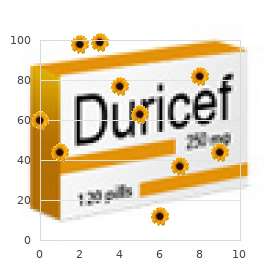
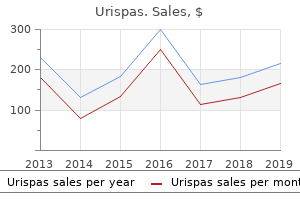
Clinical response to aminoglycoside therapy: importance of the ratio of peak focus to minimal inhibitory focus spasms quadriplegia discount urispas 200mg without prescription. Association of aminoglycoside plasma levels with therapeutic consequence in gram-adverse pneumonia back spasms 36 weeks pregnant order urispas with amex. Experience with a once-daily aminoglycoside program administered to 2 muscle relaxant 4212 best buy for urispas,184 adult sufferers muscle relaxant intravenous buy urispas 200 mg otc. Influence of hemodialysis on gentamicin pharmacokinetics, elimination throughout hemodialysis, and beneficial dosing. Trough: <2 mg/L; sufferers on extended-interval dosing typically must be re-dosed when levels fall below 1 mg/L. The affect of glipizide on early insulin release and glucose disposal before and after dietary regulation in diabetic sufferers with different degrees of hyperglycaemia. Safety and efficacy of sitagliptin in sufferers with sort 2 diabetes and continual renal insufficiency. Pharmacokinetics of gliquidone, glibenclamide, gliclazide and glipizide in center-aged and aged subjects. Effects of intensive therapy and antecedent hypoglycemia on counterregulatory responses to hypoglycemia in sort 2 diabetes. Comparison of pharmacokinetics, metabolic effects and mechanisms of motion of glyburide and glipizide throughout lengthy-time period treatment. Pharmacokinetics and metabolic effects of glibenclamide and glipizide in sort 2 diabetics. Pharmacokinetics and pharmacodynamics of glipizide after once-daily and divided doses. Glipizide: a second-technology sulfonylurea hypoglycemic agent: pharmacology, pharmacokinetics and scientific use. Bioavailability of glipizide and its effects on blood glucose and insulin levels in sufferers with non-insulin-dependent diabetes. Pharmacokinetics and pharmacodynamics in addition to metabolism following orally and intravenously administered C14-glipizide, a new antidiabetic. Intervention to decrease glyburide use in elderly sufferers with renal insufficiency. Pharmacokinetics of oral glyburide in subjects with noninsulin-dependent diabetes mellitus and renal failure. Groop L, W�hlin-Boll E, Groop P-H, T�tterman K-J, Melander A, Tolppanen E-M, Fyhrqvist F. Risk of hypoglycaemia with oral antidiabetic agents in sufferers with sort 2 diabetes. Severe sulfonylurea-induce hypoglycemia: a problem of uncritical prescription and deficiencies of diabetes care in geriatric sufferers. An evaluation of the therapeutic effects and dosage equivalence glyburide and glipizide. Renal function in sort 2 diabetes with rosiglitazone, metformin, and glyburide monotherapy. Glyburide in non-insulin dependent diabetes: its therapeutic effect in sufferers with illness poorly controlled by insulin alone. Pharmacokinetic disposition of 14C-glyburide in sufferers with various renal function. Pharmacokinetics of intravenous glibenclamide investigated by a excessive efficiency liquid chromatographic assay. Pharmacokinetics and pharmacodynamics of glyburide in younger and elderly nondiabetic adults. Impaired renal function modifies the risk of extreme hypoglycemia among users of insulin however not glyburide: a inhabitants-primarily based nested case-control study. Effects of a new modified, balanced hydroxyethyl starch preparation (Hextend) on measures of coagulation. Osmotic nephrosis: Acute kidney injury with accumulation of proximal tubular lysosomes as a result of accumulation of exogenous solutes. Effect of progressive haemodilution with hydroxyethyl starch, gelatin, and albumin on blood coagulation. The effects of perioperatively administered colloids and crystalloids on main platelet-mediated hemostasis and clot formation. Systematic review of randomized scientific trials on using hydroxyethyl starch for fluid administration in sepsis.
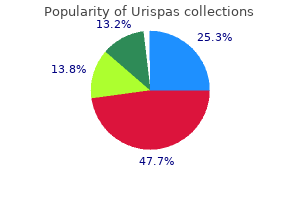
Iron-2 can be the most physiological to use muscle relaxant causing jaundice purchase 200mg urispas, nevertheless it requires a cyclotron for its manufacturing and has a halflife of only eight hours; it usually requires high quality pictures produced with a positron digital camera muscle relaxant supplements cheap 200 mg urispas free shipping. Higher doses and enhanced display techniques such as thresholding and masking allow the bone marrow to be visualized muscle relaxant used for purchase urispas with visa. Recommended strategies for floor counting to determine site of purple cell destruction spasms hindi meaning purchase urispas without a prescription, Br. Recommended strategies for radioisotope platelet survival research, Blood 50 (1977) 1137� 1144. The nuclear drugs imaging of inflammatory processes and infection is a form of tissue characterization which has moved from the widely delicate, but non-specific or context specific, agents, to extra illness specific agents. Inflammation Acute irritation is usually initiated by trauma, burns or infective agents leading to tissue damage and tissue necrosis. These components initiate defence mechanisms, such as the discharge of cytokines, enhances and antibodies, that are associated with vasodilation and elevated capillary permeability leading to extravasation of proteins and cells to the affected space. They migrate down the chemoattractant gradient and result in the classical mixture of swelling, redness, pain and protecting lack of function. Chronic irritation is characterized by a discount in vasodilation and capillary permeability, a discount in leucocyte activity, and a rise in monocytes and macrophages with lymphocytic infiltration. It is perpetuated by persevering with necrosis, adopted by activation of dendritic cells and appearance of antigen presenting cells, with potential formation of autoimmune illness granuloma. Clearly, radiolabelled white cells and agents that rely upon vascular permeability will be less effective in this scenario. In the case of infection, a yet extra specific agent is preferable, such as one binding only to bacteria, for instance 99mTc-ciprofloxacin (Infecton). Inflammation and infection imaging agents and their indications (a) Imaging irritation the selection of imaging agent depends on the biological processes, as outlined above. Advantage may be taken of elevated vascular permeability by using 67Ga citrate transferrin complex; polyclonal human immunoglobulin; liposomes (100 mm), particularly if pegylated; nanocolloids; and dextrans. The endothelium in vasculitis could also be proven with E-selectin antibodies and Amyloid by using 123I serum amyloid protein or 99mTc-aprotonin. Nuclear drugs techniques rely upon radiolabelling parts of the inflammatory course of or bacteria directly. Evaluation as to whether a patient has an infection or not should be made towards these established systematized standards. It may be seen that the imaging of inflammatory processes and infection is a form of tissue characterization by nuclear drugs. This has moved away from using extra non-specific techniques that react with irritation, infection, granuloma and tumours, such as the standard three part bone scan, with 67Ga-citrate and 18F-deoxyglucose, in direction of agents specific to irritation such as radiolabelled white cells or human immune globulin, and to agents specific to a selected illness (Table 5. The labelling is labour intensive and should finally get replaced by in vivo labelling strategies. Furthermore, the speed of appearance of a constructive uptake provides some indication of the irritation activity. On later pictures, white cell uptake could also be seen within the region of the caecum as a non-specific effect and motion of white cells alongside the bowel is to be anticipated in inflammatory bowel illness. White cell uptake will also be evident in infective enteritis, in focal lymphadenitis and in appendicitis. Another key indication is fever and pain following abdominal surgical procedure, to be able to determine a subphrenic abscess, pelvic abscess or focal peritonitis. In the spine, destruction of bone marrow might trigger a focal defect in a vertebra, as a substitute of a focal improve. In hip prostheses, the extent of the functional marrow might need to be determined by a colloidal scan to reveal whether the white cell uptake is because of marrow (physiological) uptake or to true irritation at the prosthesis. In neonates, the identification of osteomyelitis with white cells could also be unreliable. In instances of fracture, both of the stress or traumatic variants, white cell uptake is non-specific. The advantages are the dearth of a need to obtain blood, since they are often given by direct intravenous injection, and their selectivity for explicit white cells or inflammatory parts. The disadvantages embody a excessive molecular weight, which can give poor tissue penetration, although fragmentation helps to improve this; an extended blood residence time; excessive liver and bone marrow uptakes; potential improvement of human antimouse antibodies (which is, nevertheless, much overstated and not an issue for imaging); and a possible alteration of goal cell function. Radiopharmaceuticals the preparation of three reagents is outlined within the following sections. These are: - Tc-99m leucocytes; - Tc-99m IgG; - Tc-99m Infecton (ciprofloxacin).
Buy cheap urispas 200mg line. Transaxillary First Rib Resection for Thoracic Outlet Syndrome (TOS).
